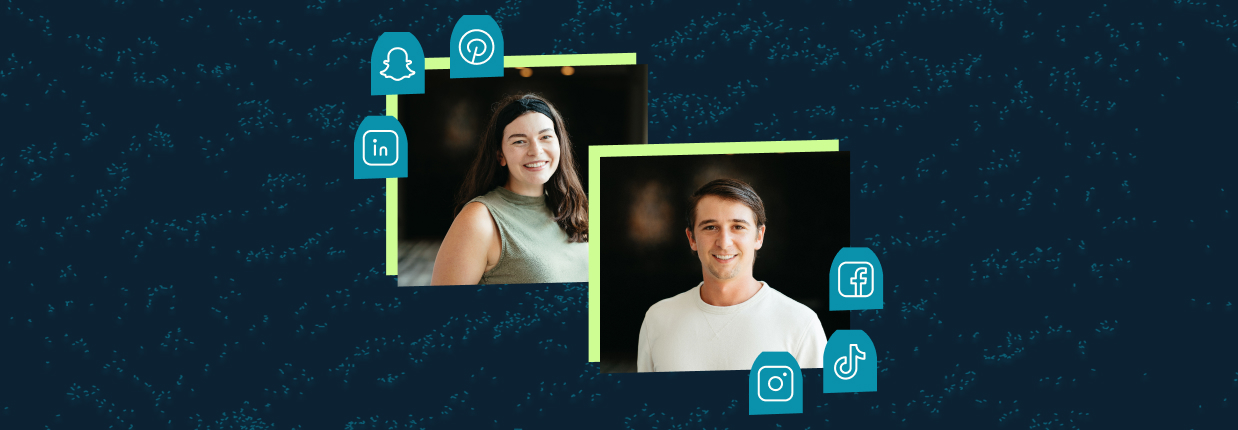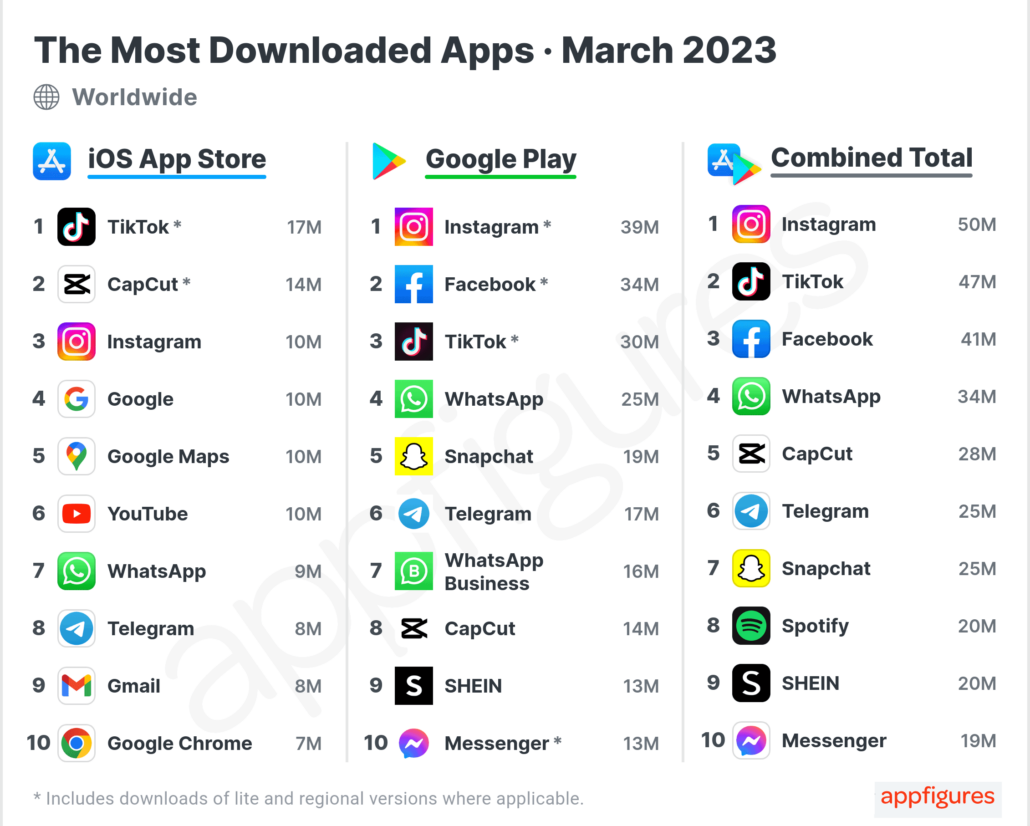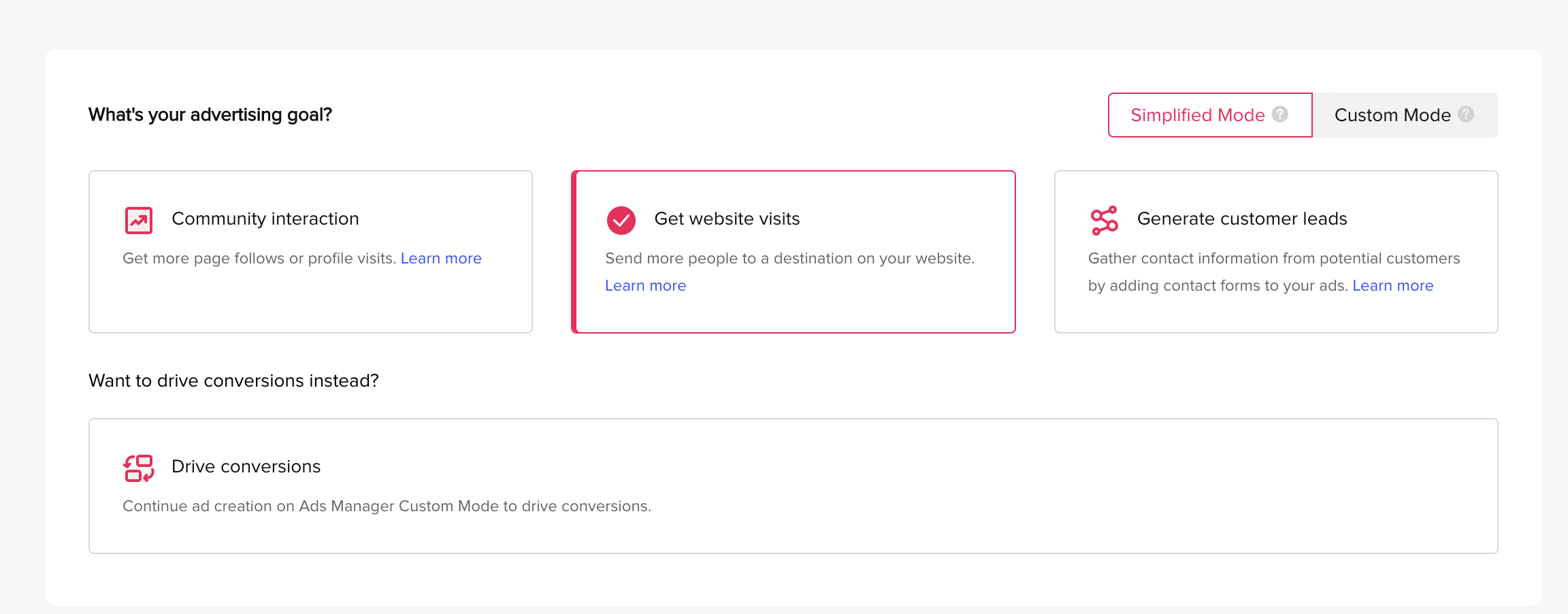8 Channels to Diversify Your Digital Ad Spend
The Internet is constantly evolving with a new platform or a new tactic or a new feature coming out nearly every week. This means that growth marketing is also constantly evolving, and it’s really easy to want to jump onto every shiny new toy as they roll out. Our expertise here at Tuff is in a variety of areas and especially growth and performance marketing. Therefore, we’re always looking for new ways to diversify our partners’ channel mix to utilize their digital ad spend to drive the best, most efficient results possible.
How to choose channels to diversify your digital ad spend
If you’re considering trying out a few new platforms, we recommend asking yourself some key questions before you decide which ones to explore:
- What is the budget I have to work with, and what do I feel comfortable spending on a daily basis in a given channel?
- Who is the audience I’m trying to reach? How can I reach them – by interest, demographic, groups they’re apart of?
- What type of creative do I have access to or what can I create?
- What kind of time do I have to manage these campaigns and make optimizations?
Once you’re able to answer some of these questions, you’ll be able to figure out quickly which channels you have the resources and bandwidth for. Now for some ideas…
TikTok
This may seem like a no-brainer at this point, but we have a lot of partners who come to us looking to diversify their channel mix who are not yet running paid ads on TikTok! This is usually the first channel businesses who have just started to scratch the surface of paid social want to explore next, and for a good reason: TikTok reported that they have 150 million monthly active users in the US in March 2023 – up by 50 million in just 2 years. 40% of users have reported that they don’t have a Facebook, so if you’re looking to get in front of an audience that you haven’t tapped into just yet, they are likely here. We’ve tested TikTok for both B2C and B2B businesses and have seen success with both!
TikTok is a great channel to explore if you’re looking for a way to promote your product or service with creative video assets. The best part? They don’t even need to be super-produced or polished. In fact, the audience on TikTok gravitates toward ads that appear more native to the platform, like scrappy UGC testimonials, the green screen feature, and trending sounds. We’ve even seen success with ads made for TikTok on other channels, like Facebook and Instagram, which shows that people are looking to consume this type of content.
You have the ability to target by age range, gender, geographic locations (states, cities, or DMAs), interests, hashtags, behaviors, and more (hint: we have a lot of success with broad targeting, meaning no additional targeting outside of geographic and age targeting 😉) You can even leverage an ad format called Spark Ads, which allows you to run an already-existing TikTok video from your own organic account or influencers’, appearing even more native on the channel.
Pros: possibilities to be more creative with your video assets due to the nature of the platform; large audience in mostly every age range
Cons: limited geographic targeting (no postal codes or radius targeting); strict ad policies; higher daily budget necessary to make a mark than other ad platforms
Perfect For: B2C or B2B advertisers looking to generate awareness and conversions through video creative to a very engaged audience
In an age of both community and curiosity, people are very often looking toward platforms where they can ask questions, learn new things, and interact with like-minded individuals, and Reddit is the perfect place to do all of the above. Reddit is a social media channel but also a forum and news site where people can join hundreds of thousands of communities, or “subreddits,” that usually fall within a specific category.
Reddit users are typically very active and spend time on the channel every day – it’s expected that 55.79 million people will use the channel daily this year. This means the reach you’d have access to is pretty massive. Reddit users are pretty tuned into whatever it is they’re reading or talking about in subreddits, and they also tend to be more skeptical of advertising on the platform. It’s important to really make your creative native to the platform and to target very specifically so that you make sure you’re reaching the right audience. Targeting options include communities (subreddits), interests, custom audiences (like lists, remarketing audiences, and lookalike audiences), and, as of June 2023, keywords.
The platform also offers a wide range of ad formats, including text ads, image ads, video ads, carousel ads, and even a product called Conversation Placements, which sit within a conversation thread under a post but above the first comment, appearing like a native addition to the conversation. The key to success in optimizing your Reddit ad creative is to make sure you’re producing assets that do not appear too much like an ad but rather a way to make a valuable contribution to the subreddit.
Pros: exposure to a highly-engaged audience; a variety of targeting options (and you have the ability to do audience research directly on the platform by perusing subreddits); less expensive than other ad platforms
Cons: not every subreddit that exists is available to target as a community; Reddit users may ignore ads more than users on other ad platforms; very simple ad formats
Perfect For: advertisers looking to reach a niche audience where they’re already spending time (like people interested in career development, shopping, fitness and health, personal finance, etc.)
Programmatic
“Programmatic” has been a buzzword for a while and we’ve certainly been hearing more and more partners who are interested in testing it out as of late.
In essence, programmatic advertising allows advertisers to reach very specific audiences outside of Google and Facebook/Instagram. Notable programmatic platforms include StackAdapt, The Trade Desk, and Criteo, though there are many others.
Ad types include standard display, video, CTV, audio, and native display, making it easy to repurpose assets used on other channels before investing into platform-specific creatives. Using benchmark data from legacy platforms will help inform early optimizations and the overall effectiveness of the strategy. If you’re looking to tap into a platform that can massively scale your digital ad spend, programmatic may be just the thing for you. Let’s take a quick look at a few of our favorite platforms.
The Trade Desk
The Trade Desk is the biggest player in the programmatic space. This is the home of more traditional Media Buying. You can go here to advertise on all of the big networks you are familiar with. Fox, ABC, ESPN, CBS and everything in between are available for placements. Out of all of the programmatic platforms, Trade Desk has the largest inventory available out of all of the possible programmatic platforms, but also the highest minimum spend thresholds.
With revenue over $1B annually, they are certainly a giant in the space, but it makes sense as to why they are so large. They are used by agencies, large media companies, and many enterprise level companies. Their open API makes Trade Desk a perfect fit for a team with a large swath of data to analyze and utilize. You can plug directly into the platform and get to work immediately with all of your data at your fingertips.
Pros: Virtually unlimited inventory, multiple integrations with other platforms, open API.
Cons: High monthly minimum spend not achievable for smaller businesses.
Perfect For: Media buying agency or enterprise level company.
Criteo
When we think about Criteo, we think about dynamic retargeting. If you are an ecommerce business, Criteo may be just right for you. It makes it incredibly easy to retarget users who have been to a product page, but have yet to convert. They have placements all over the internet that engage users throughout the full buying journey. Criteo is truly a powerful option for nurturing people who are familiar with your brand or product, but need that extra nudge over the finish line.
According to the company, they serve over 5 billion ads per day. Although retargeting users is one of Criteo’s strongest assets, they offer solutions for demand generation, customer acquisition, and brand awareness. Their platform is as easy to use as any of the top competitors in the programmatic space, making this a viable option for just about any advertiser.
Pros: Quality machine learning, high end placements, detailed remarketing
Cons: If you are not an ecommerce business, this may not be the most effective platform four you
Perfect For: Ecommerce business looking to retarget users with product related ads.
StackAdapt
There’s lots to love about StackAdapt. It’s an easy to use programmatic platform that allows brands to advertise on Display, Video, Native, CTV, and Audio placements all over the web. Their reporting is top notch and can easily integrate with any internal CRMs, pixels, or preferred tracking platforms while also providing an accurate representation of data directly in the platform.
One of the best selling points of this programmatic platform is that there is no minimum to run campaigns. This can be added easily to any media plan. Many others have minimums of $50,000 or above, but with StackAdapt, you can do powerful testing on a limited budget. Their access to audiences is another key area that Tuff utilizes when advertising for our partners. We have access to over 300,000 audience lists for both B2C and B2B users. Regardless of the business or budget, StackAdapt may be for you when thinking of running any kind of brand campaign.
Pros: Variety of ad formats, lots of creative options, massive reach of users, effective targeting options, no minimum spend required, self serve platform.
Cons: Easy to get lost in the weeds or overspend on ineffective placements.
Perfect For: Business of any size looking to test programmatic on a large or small scale.
MNTN CTV
We’ve been hearing for many years now that linear TV advertising is out, especially with the rise of social media and the Internet, where we’ve unlocked other avenues to advertise to an audience. However, when Connected TV advertising about 5 years ago, advertisers quickly saw the value of promoting their content through the channel. As of July 2022, a report from Nielsen reported that streaming platforms accounted for just about 35% of total TV consumption, beating our cable and broadcast TV.
CTV advertising refers to video ads that are delivered to an audience over the Internet as they stream movies and TV shows through their Smart TV or devices like an Amazon Fire Stick or Roku. You’re able to reach people with the impact of traditional TV advertising but with the precision and measurement capabilities you’re used to having access to through digital advertising, like audience-based targeting, IP-based targeting, and multi-touch attribution. You also have access to a self-service advertising platform where you can navigate everything from campaign set-up to adjusting our daily budgets to generating customizable reports.
Pros: ease of use with an intuitive advertising platform; customizable campaign set-ups; finetuned audience targeting; customizable reporting options; accurate, real-time multi-touch attribution
Cons: you need to work with a CSM to create and set up your account; more expensive than typical digital advertising on social and programmatic platforms
Perfect For: advertisers who have polished, produced video assets they’re looking to get in front of a large audience
Nextdoor
Nextdoor advertising has become an attractive option for many advertisers, with 1-in–3 of US households being present on the platform. Data indicates that these users make 90% of their purchases within 15 miles of their work or home, and predominantly from local businesses.
When Tuff works with partners that have more of a local target audience, Nextdoor is one of the first non-traditional PPC tactics we explore.
While Nextdoor is a great emerging channel for diversifying your digital ad spend, we do run the disclaimer that it likely won’t be a major part of your media budget. With limited placements and a growing userbase, it’s hard to spend a large amount of money on Nextdoor in any given month – although this could change in the near future as they continue to grow.
Pros: Hyperlocal targeting, affordable CPMs, engaged local audiences
Cons: Smaller userbase, limited placements
Perfect For: Businesses with local presences
Pinterest can be a great option for advertisers, especially for ones that already possess a strong paid search strategy. This is because the Pinterest platform allows you to use keyword targeting. Since Pinterest is used as a search engine, this makes sense and can allow for incredibly targeted advertising.
The platform also has other traditional targeting methods that mirror Facebook, Instagram, and Google audience targeting, such as interest-based targeting.
Pinterest is a largely untapped platform, especially for ecommerce brands and service businesses. Since Pinterest users are planners, we recommend using their larger attribution windows (30 / 30 / 30) and using it as a mid-funnel tactic to increase consideration for your brand, and having it be a smaller part of your digital ad spend.
Pros: Visually appealing ad formats, very active userbase, lots of targeting options (intent + demographic)
Cons: Low last-click activity, longer attribution windows
Perfect For: Businesses trying to reach users in the consideration stage of the funnel
Spotify
Spotify should definitely be considered when attempting to diversify ad spend and reach new audiences. As one of the largest podcast and music streaming services in the world, the reach is massive and the audio ad-format adds another method of communicating with your target audience.
However, the targeting on Spotify can seem somewhat limited when compared to other platforms. Though reduced targeting options may cause an advertiser to shy away from the platform, it is still worth testing as a top-of-funnel awareness play due to its tremendous reach.
Pros: Good ad formats, affordable CPMs
Cons: Limited targeting options, secondary platform
Perfect For: Businesses trying to scale top of funnel reach
Microsoft Ads
Formerly known as Bing Ads, this platform is an obvious choice for businesses or advertisers looking for incremental conversions for their product or service. Microsoft Ads has basically the same offering as Google Ads. You can advertise on Bing with Search and Shopping Ads easily by importing campaigns directly from Google into Microsoft. This import feature makes this platform highly accessible to businesses of all sizes.
Even though search volume is of course much smaller than Google Ads, Bing has some unique offerings that make it a great option to add to your marketing mix. According to Microsoft, they own 17% of desktop market share, meaning that there are over 600 million PC users available to reach. This equates to over 13 billion monthly searches. Yes, that is 13 billion! Google is obviously the main player when it comes to online searches, but Bing has a significant reach that cannot be forgotten about.
Users of Bing also tend to be older and have higher incomes than the average user on Google. With 36% of its users in the top 25% of household income, Bing’s audience has more buying power for your product or service. We tend to allocate around 10% of the overall paid search budget to Microsoft Ads at the start. Learn what works for your business on this platform and scale from there!
Pros: Tends to bring in cheaper CPCs than Google Ads, lots of desktop traffic, substantial buying power from user base.
Cons: Less overall search volume than Google Ads, user interface is sometimes hard to navigate
Perfect For: Business with an older target demographic, or one who is looking to find incremental conversions to accompany other paid search and shopping efforts.
Things to Avoid While Diversifying Digital Ad Spend
While testing new channels and tactics for your digital ad spend, it’s important to remember that channel diversification can take many forms and isn’t a one-size fits all. It’s also not a panacea – testing a new channel and finding a strategy that works for you will take time. You shouldn’t expect to see immediate results on a new channel by copying the strategy you have on one of your primary channels – it will take testing, learning, and refining to find the right tactic for you.
Here are some common mistakes we see in digital ad spend diversification that you should try to mitigate:
It takes time to optimize
Most tests and experiments on new channels don’t work in the sense that they are a completely new tactic, and take time to master. Don’t try to diversify ad spend and expect to get the same results you’re seeing on other channels in week, or even month one.
Don’t forget to account for extra management
Adding new channels can increase the complexity of reporting, optimization, and overall management. Instead of checking Google Ads, Facebook Ads, and Google Analytics, for example, now you’ve got to learn how to incorporate new channels’ data and reporting dashboards into your existing systems and processes.
Don’t over-diversify
While diversification of spend and strategy is a great idea, over-diversification is a thing and can present issues of its own. If spend is spread too thinly across multiple new channels or platforms (or even multiple campaigns or ad creatives in one platform), it will take longer to gather actionable data and will be much more difficult to gauge the effectiveness of.
Want to Diversify Your Digital Ad Spend?
Tuff has managed ads on just about every platform imaginable, with budgets from partners ranging from a few thousand dollars, to one million-plus a month. Whether you’re in scale-up mode and wanting to try some new tactics or channels, or you want to optimize your advertising efforts on your existing channels, we can help. Let’s talk!










